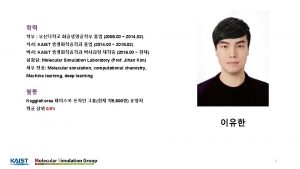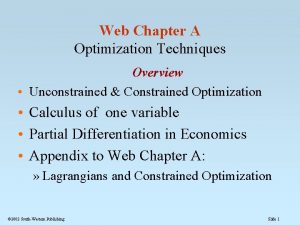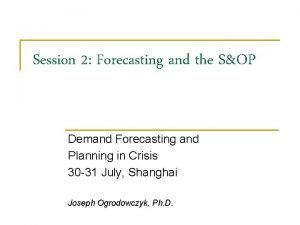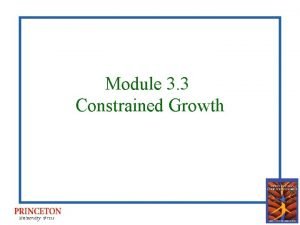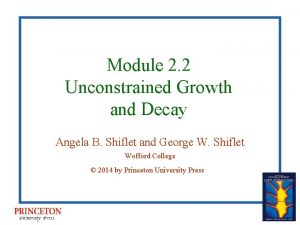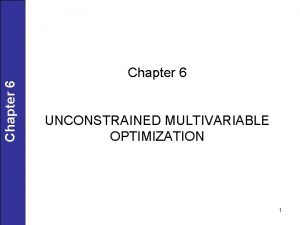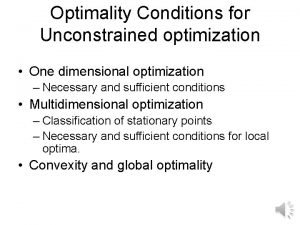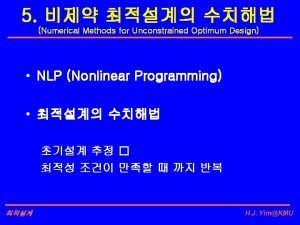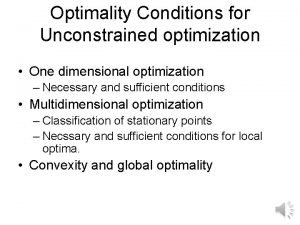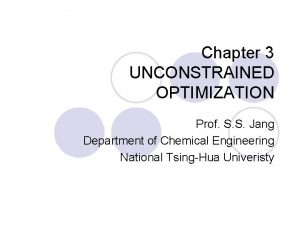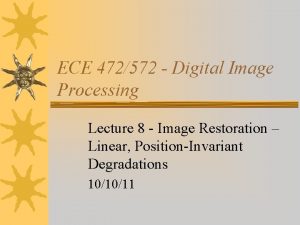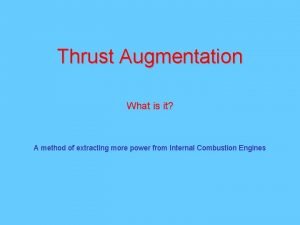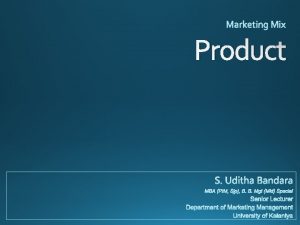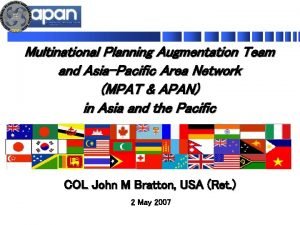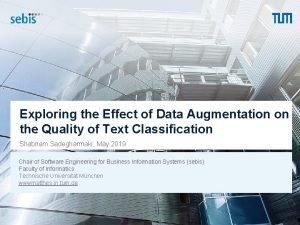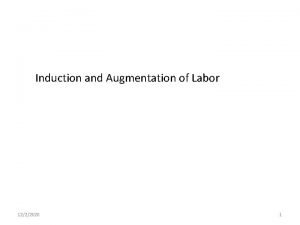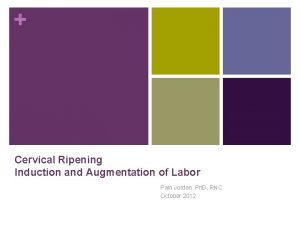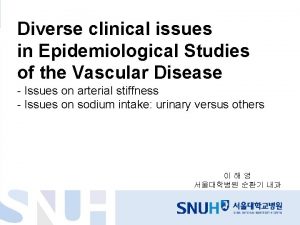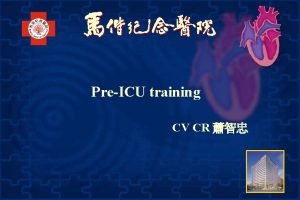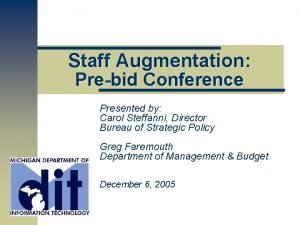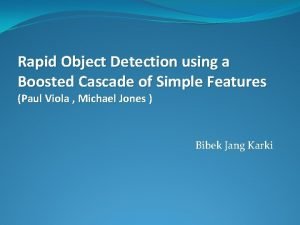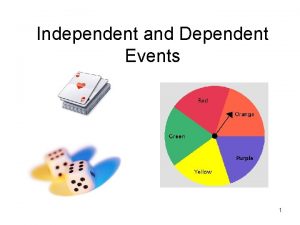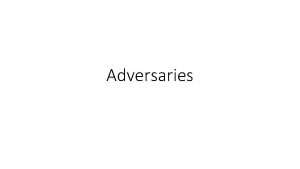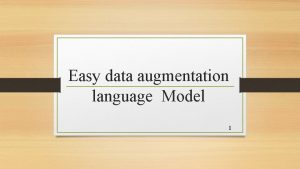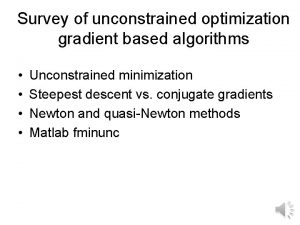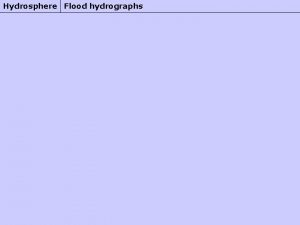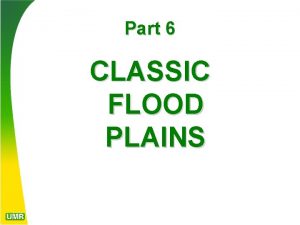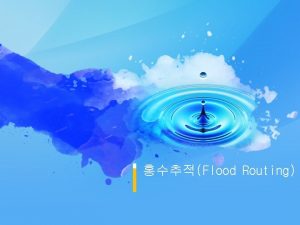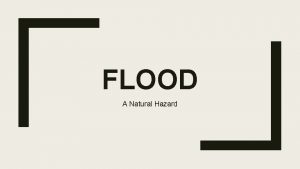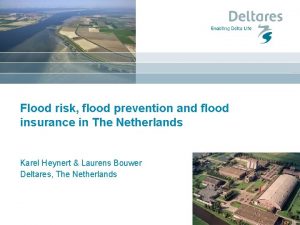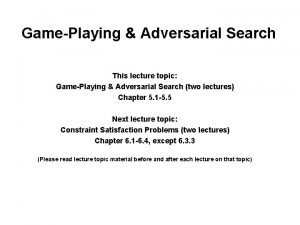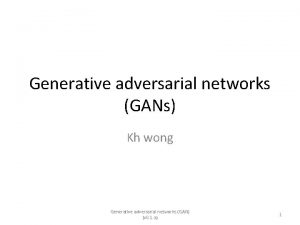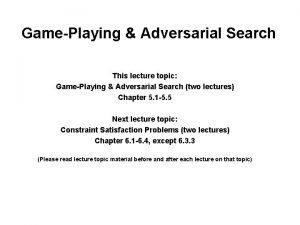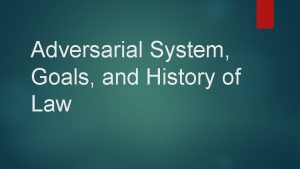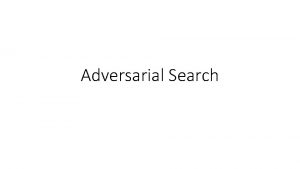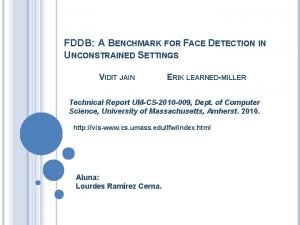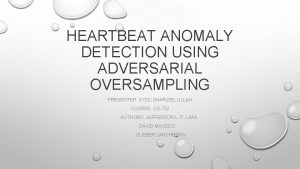Unconstrained Flood Event Detection Using Adversarial Data Augmentation






























- Slides: 30

Unconstrained Flood Event Detection Using Adversarial Data Augmentation Samira Pouyanfar 1, Yudong Tao 2, Saad Sadiq 2, Haiman Tian 1, Yuexuan Tu 2, Tianyi Wang 1, Shu-Ching Chen 1, Mei-Ling Shyu 2 1 School of Computing and Information Sciences Florida International University Miami, FL, USA 2 Department of Electrical and Computer Engineering University of Miami Coral Gables, FL, USA

Agenda • Introduction • Related Work • Proposed Framework • Experiments & Analysis • Conclusion and Future Work 1

Agenda • Introduction • Related Work • Proposed Framework • Experiments & Analysis • Conclusion and Future Work 2

Introduction • Deep learning achievements heavily depend on the existence of clean, annotated, and large-scale datasets • Collecting such datasets is expensive and laborious • However, in many real-world applications, it is challenging to collect large-scale clean data for a diverse set of scenarios and conditions 3

Exemplary Real-World Application • Flood Event Detection 4

Flood Event Detection in Different Scenarios • Daytime vs. Nighttime 5

Flood Event Detection in Different Scenarios • Rainy and Blurry 6

Flood Event Detection in Different Scenarios • Different Views 7

Objective • Train a flood event detection model • Require: • Tens of thousands of training images in various scenarios with or without flood event • Manual label for all the training images • Is it possible to train a flood event detection model with reduced human efforts to build the dataset? • Yes, by using synthetic images 8

Agenda • Introduction • Related Work • Proposed Framework • Experiments & Analysis • Conclusion and Future Work 9

Conventional Data Augmentation • It is a strategy that enables us to significantly increase the diversity of data available for training models, without actually collecting new data • Rotation • Shear • Flip • Shift • Brightness • . . . Original Augmented Images 10

Limitations of Conventional Data Augmentation • Limited types of modifications • Changes in shape • Changes in color • Modify images as a whole • Cannot generate nighttime images from daytime ones 11

Generative Adversarial Network (GAN) • Generator: generates fake samples and tries to fool the Discriminator • Discriminator: tries to distinguish between real and fake samples • Train them against each other • Repeat this to get better Generator and Discriminator 12

GAN for Data Augmentation • Using GAN to generate class-conditional fake images to improve the performance of classification and handle class imbalance • Used to improve Liver Lesion Classification • Limitation: • Small size images • Grey Scale images Image sources: [1] Mariani, Giovanni, et al. "BAGAN: Data Augmentation with Balancing GAN. " Co. RR, abs/1803. 09655 (2018), and [2] Frid-Adar, Maayan, et al. "GAN-based synthetic medical image augmentation for increased CNN performance in liver lesion classification. " Neurocomputing 321 (2018): 321 -331. 13

Cycle. GAN • Style transfer with unpaired image data • Can we use style transfer for image augmentation? 14

Agenda • Introduction • Related Work • Proposed Framework • Experiments & Analysis • Conclusion and Future Work 15

Proposed Framework • Given a flood detection dataset • Crawl images of each target style (e. g. , nighttime) • Train Cycle. GAN for data augmentation • Train a classification model with the augmented dataset 16

Style Image Crawling • Style images are all collected from Google Images with manual cleaning • Automatically crawled based on keywords of the desired context, including night, rainy, etc. 17

Train Cycle. GAN for Image Augmentation • Train Discriminator in Cycle. GAN 18

Train Cycle. GAN for Image Augmentation • Train Generator in Cycle. GAN 19

CNN Classification • Online Augmentation: Randomly select from one of the styles during training • Res. Net 50 is applied here for classification • Test images are directly fed into the trained CNN model to produce the prediction result 20

Agenda • Introduction • Related Work • Proposed Framework • Experiments & Analysis • Conclusion and Future Work 21

Flood Detection Datasets • Image dataset collected from Youtube and Twitter using keyword “Harvey” • Manual annotation of “Flood” vs. “Non-Flood” • Manual annotation of styles for the testing set Non-Flood Training Testing Style Total 1866 1364 - Total 8645 5072 21000 Regular - 3627 - Night - 294 7000 Rainy - 799 7000 Blurry - 434 7000 22

Examples of Synthetic Data original blurry rainy night 23

Improved Recall on Rare Contexts Recall scores on the flood testing dataset separated by style Method night rainy blurry Res. Net 50 0. 785 Ours 0. 831 0. 795 0. 927 0. 791 0. 873 avg. noisy 0. 790 0. 877 flood (total) 0. 898 0. 936 24

Comparison with Other Style Transfer Models Method Precision Recall Res. Net 50 0. 916 0. 898 MSGNet [1] 0. 855 0. 970 Style transfer [2] 0. 853 0. 978 Ours 0. 896 0. 936 F 1 Accuracy 0. 907 0. 855 0. 909 0. 847 0. 911 0. 849 0. 916 0. 864 [1] Hang Zhang and Kristin Dana, “Multi-style generative network for real-time transfer, ” in European Conference on Computer Vision, 2018, pp. 349– 365. [2] Leon A Gatys, Alexander S Ecker, and Matthias Bethge, “A neural algorithm of artistic style, ” Co. RR, vol. abs/1508. 06576, 2015. 25

Agenda • Introduction • Related Work • Proposed Framework • Experiments & Analysis • Conclusion and Future Work 26

Conclusion • We employed Cycle. GAN for style transfer to improve the generalizability of a deep learning model • Reduce annotation and collection effort to build large-scale datasets to train a deep learning model that works for various contexts • The proposed model can detect flood from real-time images collected from public cameras (e. g. network cameras) and assist the community for better decision-making and faster and more reliable emergency responses during a disastrous event 27

Future Work • Automatically clean the style images to improve the performance • Integrate classification into style transfer to build an end-to-end model • Extend the current model to various disastrous events 28

Thanks! Yudong Tao yxt 128@miami. edu 29
 Helmert contrast
Helmert contrast Constrained and unconstrained optimization in economics
Constrained and unconstrained optimization in economics Unconstrained demand
Unconstrained demand One dimensional unconstrained optimization
One dimensional unconstrained optimization Unconstrained decay
Unconstrained decay Unconstrained decay
Unconstrained decay Unconstrained multivariable optimization
Unconstrained multivariable optimization Optimality conditions for unconstrained optimization
Optimality conditions for unconstrained optimization Modified fibonacci sequence
Modified fibonacci sequence One dimensional unconstrained optimization
One dimensional unconstrained optimization Ssjang
Ssjang Unconstrained restoration
Unconstrained restoration Unconstrained def
Unconstrained def What is thrust augmentation
What is thrust augmentation Product augmentation
Product augmentation Multinational planning augmentation team
Multinational planning augmentation team Staff augmentation synonym
Staff augmentation synonym Labor induction methods
Labor induction methods Augmentation of labour
Augmentation of labour Boob job dubai
Boob job dubai Augmentation index
Augmentation index Cheek filler dubai
Cheek filler dubai Pcwp shock
Pcwp shock Staff augmentation
Staff augmentation Phx breast augmentation
Phx breast augmentation Rapid object detection using a boosted cascade
Rapid object detection using a boosted cascade Speed detection of moving vehicle using speed cameras ppt
Speed detection of moving vehicle using speed cameras ppt Near miss event in hospital
Near miss event in hospital Simple event and compound event
Simple event and compound event Independent or dependent
Independent or dependent Dependent events examples
Dependent events examples
